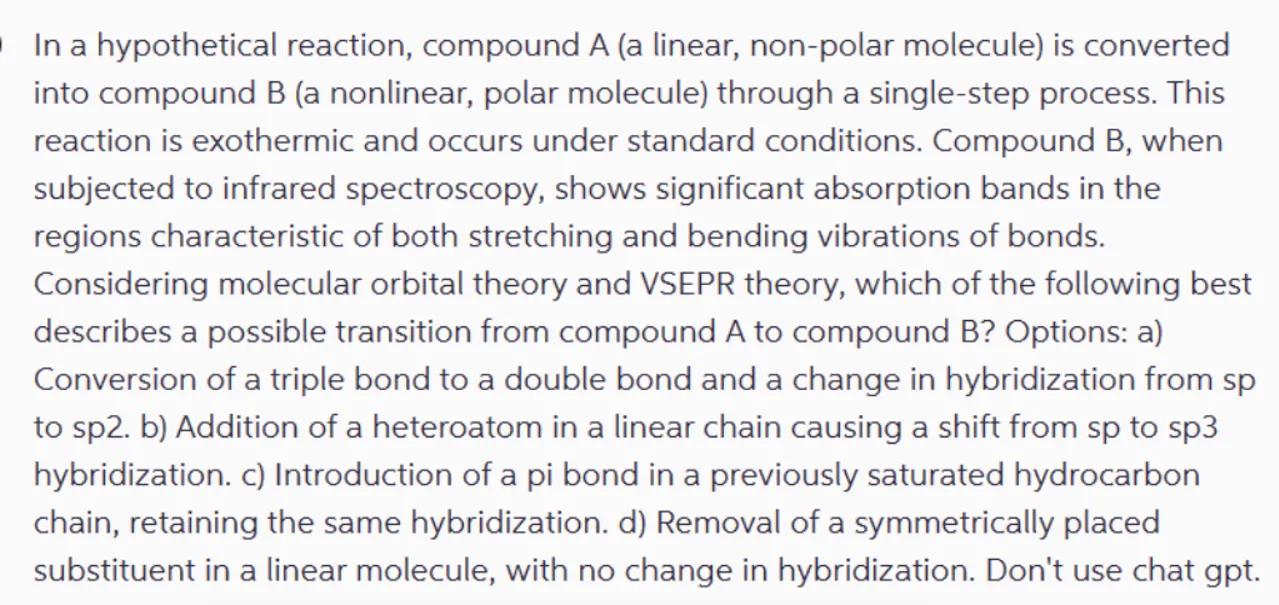
Sia

Question
Chemistry
Posted over 1 year ago
In a hypothetical reaction, compound A (a linear, non-polar molecule) is converted into compound B (a nonlinear, polar molecule) through a single-step process. This reaction is exothermic and occurs under standard conditions. Compound B, when subjected to infrared spectroscopy, shows significant absorption bands in the regions characteristic of both stretching and bending vibrations of bonds. Considering molecular orbital theory and VSEPR theory, which of the following best describes a possible transition from compound A to compound B? Options: a) Conversion of a triple bond to a double bond and a change in hybridization from sp to sp2. b) Addition of a heteroatom in a linear chain causing a shift from sp to sp3 hybridization. c) Introduction of a pi bond in a previously saturated hydrocarbon chain, retaining the same hybridization. d) Removal of a symmetrically placed substituent in a linear molecule, with no change in hybridization. Don't use chat gpt.

Answer from Sia
Posted over 1 year ago
B
Key Concept
Molecular Polarity and Hybridization
Explanation
The addition of a heteroatom to a linear chain can cause a shift from sp to sp3 hybridization, which can result in a change from a non-polar to a polar molecule and a change from linear to non-linear geometry, consistent with VSEPR theory.
Not the question you are looking for? Ask here!
Enter question by text
Enter question by image
Unlock Smarter Learning with AskSia Super!
Join Super, our all-in-one AI solution that can greatly improve your learning efficiency.
30% higher accuracy than GPT-4o
Entire learning journey support
The most student-friendly features
Study Other Question